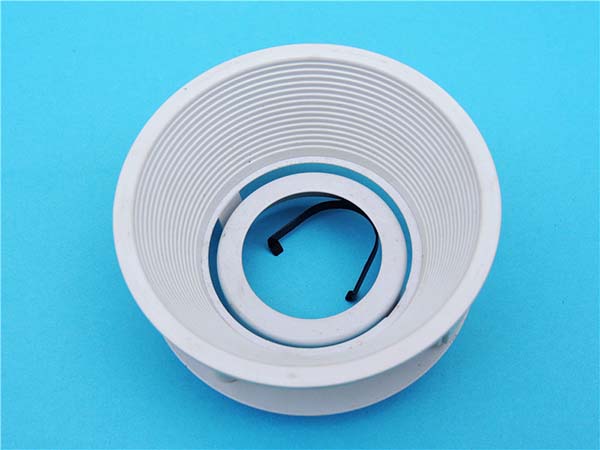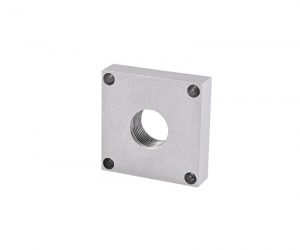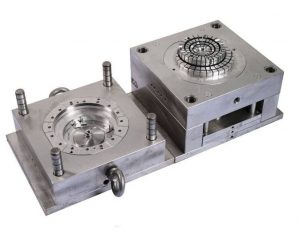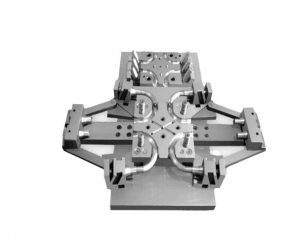Introduction
Baquelite, a pioneering synthetic material, has left an indelible mark on the history of materials science. Among its various forms, Baquelite brown holds a unique place. As an engineer at Yigu Technology, I've encountered Bakelite brown in numerous projects, and its characteristics and applications are both fascinating and practical. This article aims to explore everything you need to know about Bakelite brown, from its properties to its uses, helping you make informed decisions when dealing with this material.
What is Bakelite Brown?
Definition and Composition
Bakelite brown is a type of Bakelite, which is a thermosetting plastic. It is formed through a chemical reaction between phenol and formaldehyde under specific conditions. The characteristic brown color of this variant often comes from the presence of certain impurities or additives during the manufacturing process. The base Bakelite material is a cross - linked polymer, and the addition of substances like fillers or pigments can modify its appearance and properties. For Yigu Technology example, some Bakelite brown products may contain wood flour or other organic fillers, which not only contribute to the color but also affect the material's mechanical properties.
Properties of Bakelite Brown
Mechanical Properties
Strength and Rigidity
Bakelite brown exhibits good strength and rigidity. It can withstand moderate mechanical stress without significant deformation. For instance, in a study comparing the flexural strength of Bakelite brown with some common plastics, it was found that Bakelite brown had a flexural strength of around 100 - 120 MPa. In contrast, low - density polyethylene, a widely used plastic, has a flexural strength of only about 7 - 15 MPa. This makes Bakelite brown suitable for applications where structural integrity is important, such as in the casings of electrical appliances.
Impact Resistance
While Bakelite brown is relatively strong, it is somewhat brittle and has lower impact resistance compared to some modern engineering plastics. However, its performance can be improved by adding certain reinforcements. For example, when fiberglass is added to the Bakelite matrix, the impact resistance of the resulting composite can increase by up to 30 - 40%. In its pure form, Bakelite brown may crack or break under sudden, high - impact forces, so it needs to be used in applications where such impacts are not expected or minimized.
Thermal Properties
Heat Resistance
One of the remarkable properties of Bakelite brown is its heat resistance. It can withstand temperatures up to 150 - 180 °C without significant softening or degradation. This makes it ideal for applications where heat is a factor, such as in electrical components near heat - generating elements. In a thermal analysis experiment, Bakelite brown maintained its structural integrity and mechanical properties even after being exposed to 160 °C for several hours. In comparison, many common plastics like polypropylene start to soften at around 130 - 150 °C.
Thermal Conductivity
Bakelite brown has a relatively low thermal conductivity, typically in the range of 0.1 - 0.2 W/(m·K). This means it is a good thermal insulator. In applications where heat transfer needs to be minimized, such as in the handles of cooking utensils or in insulating barriers in electrical devices, Bakelite brown's low thermal conductivity is highly beneficial. For example, in a kitchen knife with a Bakelite brown handle, the low thermal conductivity ensures that the handle remains cool to the touch even when the blade is exposed to high temperatures.
Electrical Properties
Insulating Properties
Bakelite brown is an excellent electrical insulator. Its volume resistivity can be as high as 10¹² - 10¹⁴ ohm - cm. This property makes it invaluable in the electrical and electronics industry. In electrical switches and connectors, Bakelite brown is used to prevent the flow of electricity between different components, ensuring safe and proper operation. In contrast, materials like aluminum, which is a good electrical conductor, has a resistivity of around 2.82 x 10⁻⁸ ohm - cm.
Dielectric Strength
It also has a high dielectric strength, usually in the range of 10 - 20 kV/mm. This allows it to withstand high - voltage electrical fields without breaking down. In high - voltage transformers, Bakelite brown is used as an insulating material between the windings to prevent electrical breakdown and ensure the efficient transfer of electrical energy.
Chemical Resistance
Bakelite brown shows good resistance to many common chemicals. It can withstand exposure to acids, alkalis, and solvents to a certain extent. For example, it can resist dilute hydrochloric acid and sodium hydroxide solutions without significant corrosion. However, it is not completely impervious to all chemicals. Strong oxidizing agents like concentrated sulfuric acid or nitric acid can attack and degrade Bakelite brown over time. In industrial applications where chemical exposure is likely, such as in chemical processing plants or laboratories, the chemical resistance of Bakelite brown makes it a suitable choice for certain equipment and components.
Applications of Bakelite Brown
Electrical and Electronics Industry
Insulators and Connectors
In the electrical and electronics industry, Bakelite brown is widely used as an insulating material. It is used in the production of insulators for electrical wires, switches, and connectors. The high electrical resistivity and dielectric strength of Bakelite brown make it an ideal choice for preventing electrical leakage and ensuring the safe operation of electrical systems. For Yigu Technology example, in a household electrical switch, the Bakelite brown housing not only provides mechanical protection but also acts as an effective insulator, preventing users from getting electric shocks.
Circuit Boards
Bakelite brown was one of the early materials used for making printed circuit boards (PCBs). Although modern PCBs are mostly made of fiberglass - reinforced epoxy resins, Bakelite brown - based PCBs were once the standard in the industry. Their heat resistance and electrical insulating properties made them suitable for this application. In vintage electronics, such as old radios and televisions, Bakelite brown circuit boards can still be found, and they are often sought - after by collectors due to their historical significance.
Consumer Goods
Kitchenware
Bakelite brown has been used in the production of kitchenware for many years. Items like pot handles, spoon rests, and salt and pepper shakers made of Bakelite brown are not only functional but also aesthetically pleasing. The heat resistance of Bakelite brown makes it suitable for use in kitchenware, as it can withstand the heat generated during cooking. For example, a Bakelite brown pot handle will not get too hot to hold, even when the pot is on the stove for an extended period. Additionally, the brown color gives the kitchenware a classic and durable look.
Jewelry
Bakelite brown has also found its way into the world of jewelry. Vintage Bakelite brown jewelry, such as bracelets, necklaces, and brooches, is highly collectible. The unique color and texture of Bakelite brown, along with its ability to be molded into intricate shapes, make it a popular material for jewelry designers. In the 1930s - 1950s, Bakelite brown jewelry was a fashion statement, and today, it continues to be valued for its retro charm and craftsmanship.
Industrial Applications
Machinery Components
In industrial machinery, Bakelite brown is used to make various components. For example, gears made of Bakelite brown can operate smoothly and quietly. The self - lubricating properties of Bakelite, along with its wear resistance, make it suitable for use in gears. In a small - scale industrial machine, Bakelite brown gears can reduce noise and vibration, and their relatively low cost compared to metal gears can be an advantage. Additionally, Bakelite brown can be used to make bearings and pulleys in some machinery, where its mechanical properties and chemical resistance are beneficial.
Chemical Processing Equipment
Due to its chemical resistance, Bakelite brown is used in chemical processing equipment. It can be used to line tanks, pipes, and valves that come into contact with corrosive chemicals. In a chemical plant, Bakelite brown - lined pipes can transport acids or alkalis without the risk of corrosion, ensuring the efficient operation of the plant. The material's ability to withstand chemical attack helps to extend the lifespan of the equipment and reduce maintenance costs.
Identifying Real Bakelite Brown
Visual Inspection
One of the first steps in identifying real Bakelite brown is visual inspection. Real Bakelite brown often has a warm, rich brown color that can range from a light tan to a deep chocolate brown. It may have a slightly mottled or marbled appearance, which is a result of the manufacturing process. The surface of Bakelite brown is usually smooth and has a characteristic sheen. In contrast, some modern imitations may have a more uniform color and a plastic - like shine that is not typical of genuine Bakelite brown.
Physical Tests
Scratch Test
A simple scratch test can also be used to identify Bakelite brown. Bakelite is relatively hard and will not scratch easily. Using a fingernail or a soft object like a wooden toothpick, try to scratch the surface. If it is real Bakelite brown, it should resist scratching. However, if it is a softer plastic imitation, it may show visible scratches.
Heat Test
Another test is the heat test. Bakelite brown is heat - resistant. Using a heat source like a hair dryer on a low - heat setting, apply heat to a small, inconspicuous area of the material. If it is Bakelite brown, it should not soften or deform easily. But be careful not to overheat the material, as excessive heat can damage it. Imitation plastics may start to soften or melt under the same heat exposure.
Chemical Tests
For more accurate identification, chemical tests can be performed, although these should be done with caution as they may damage the material. One common chemical test involves using acetone. Apply a small amount of acetone to a cotton swab and gently rub it on an inconspicuous area of the material. If it is real Bakelite brown, the acetone should not cause any significant change. However, some modern plastics may dissolve or become sticky when exposed to acetone.
Market and Pricing of Bakelite Brown Products
Vintage vs. Modern Products
In the market, there is a distinction between vintage Bakelite brown products and modern - made ones. Vintage Bakelite brown items, especially those from the early to mid - 20th century, are highly sought - after by collectors. Their value is often based on factors such as rarity, condition, and historical significance. For example, a vintage Bakelite brown radio in good working condition can fetch several hundred dollars at an antique auction. Modern - made Bakelite brown products, on the other hand, are more commonly used in industrial and consumer applications. Their pricing is more related to the cost of production, including raw materials and manufacturing processes.
Factors Affecting Pricing
The price of Bakelite brown products can be affected by several factors. The quality of the material is a significant factor. Higher - quality Bakelite brown, with better - controlled manufacturing processes and fewer defects, will generally be more expensive. The complexity of the manufacturing process also plays a role. Products that require intricate molding or additional finishing work will cost more. Additionally, the demand for Bakelite brown products in a particular market can influence pricing. In the collectibles market, if there is a high demand for a specific type of vintage Bakelite brown item, such as a rare piece of jewelry, the price will be driven up.
Conclusion
Bakelite brown is a remarkable material with a rich history and a wide range of applications. Its unique combination of properties, including good mechanical strength, excellent heat and electrical insulation, and chemical resistance, make it suitable for various industries. Whether you are an engineer looking for a reliable material for an industrial project, a collector interested in vintage items, or a consumer in search of durable and aesthetically pleasing products, understanding Bakelite brown is essential. By knowing how to identify real Bakelite brown, its properties, applications, and market value, you can make better decisions when dealing with this material. As technology advances, Bakelite brown may continue to find new applications, or its production methods may be improved to make it more sustainable and cost - effective.



